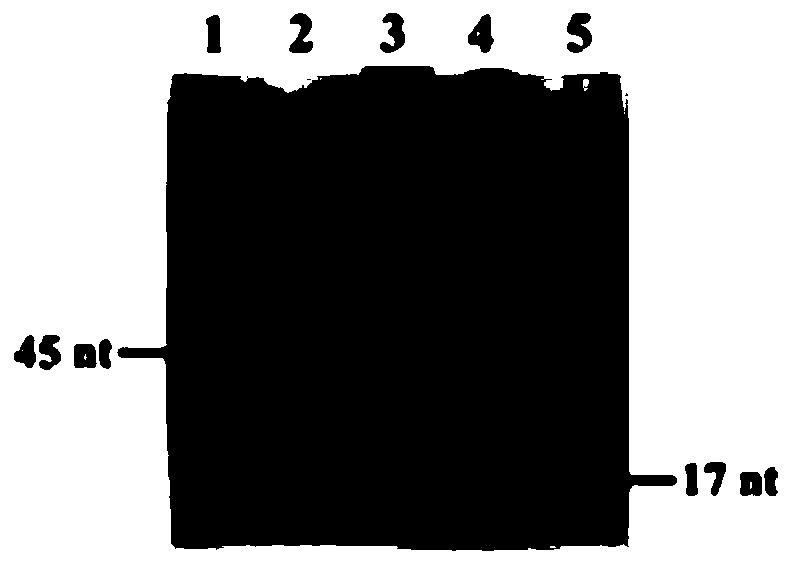Biosensor for detecting repair glycosylase and detection method and application of biosensor
A biosensor and glycosylase technology, applied in the field of biological enzyme detection, can solve the problems of long measurement time, accurate thermal cycle, complicated operation and high experimental cost, and achieve the effects of high sensitivity, simple operation and high sensitivity
- Summary
- Abstract
- Description
- Claims
- Application Information
AI Technical Summary
Problems solved by technology
Method used
Image
Examples
Embodiment 1
[0067] DNA repair-driven self-directed exponential replication. First, all synthesized oligonucleotides were dissolved in 1×Tris-EDTA buffer (10 mM tris, 1 mM EDTA, pH 8.0) to prepare stock solutions. Secondly, the DNA template was mixed in the hybridization buffer (10mM Tris-HCl, 1.5mM MgCl 2 , pH 8.0) at 95 °C for 5 min, and then slowly cooled to room temperature to form a hairpin structure. In the third step, 0.5 μl of the prepared DNA template (10 μM) was added to the excision reaction solution (10 μL) containing different concentrations of hOGG1, 2 μl of 10×NEB buffer 2 and 2 μl of BSA (10×), at 37 Incubate at 40°C for 40 minutes for hOGG1-catalyzed base excision. In the fourth step, the amplification reaction solution (25 μL) contains 6U Bst DNA polymerase, 250 micromoles per liter of dNTPs, 500 nanomoles per liter of the front inward primer (FIP), and 500 nanomoles per liter of the rear inward primer (BIP). In the reaction system, 125 nanomoles per liter of the front...
PUM
 Login to View More
Login to View More Abstract
Description
Claims
Application Information
 Login to View More
Login to View More - R&D
- Intellectual Property
- Life Sciences
- Materials
- Tech Scout
- Unparalleled Data Quality
- Higher Quality Content
- 60% Fewer Hallucinations
Browse by: Latest US Patents, China's latest patents, Technical Efficacy Thesaurus, Application Domain, Technology Topic, Popular Technical Reports.
© 2025 PatSnap. All rights reserved.Legal|Privacy policy|Modern Slavery Act Transparency Statement|Sitemap|About US| Contact US: help@patsnap.com



